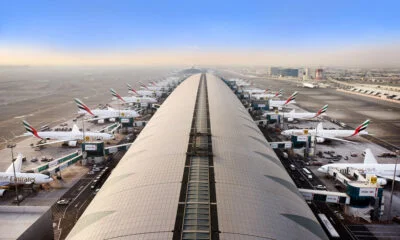News
Global Watchdog Flags Multiple Safety Issues At Beirut Airport
Concerns raised relating to air-traffic control must be urgently addressed, says the report.

An inspection of the Rafic Hariri International Airport in Beirut has revealed inadequate safety measures, many of which require urgent action.
The report, carried out by the European Union Aviation Safety Agency (EASA) and International Civil Aviation Organization (ICAO), highlights issues concerning in-air navigation services (ANS) that must be addressed with “utmost urgency”. The problem areas include air-traffic control, navigation, communication, and meteorological services.
ICAO conducts regular audits on the air infrastructure of member states to assess their capability to maintain adequate safety systems.
As a signatory to the Chicago Convention, Lebanon must comply with any prescribed ICAO standards and recommended best practices.
In the event of an immediate safety concern, ICAO can “red flag” a country over any breach of international aviation regulations. Bhutan, Russia, and the Democratic Republic of the Congo are examples of such states.
While the governments of red-flagged countries are not legally obliged to make changes after a negative audit, the results serve as a warning to inbound airlines and travelers from other nations. In extreme cases, authorities may ban flights originating from offending countries from entering their airspace.
According to the audit, “ATC staff shortage is a serious safety issue for the Beirut Airport, which could have critical repercussions for aviation in Lebanon”.
Also Read: A Guide To Digital Payment Methods In The Middle East
The report stressed it was of “crucial importance” for Lebanon’s civil aviation authorities to begin the “recruitment and retention of appropriately qualified and experienced ATS staff” as “a matter of utmost urgency”.
Another major concern related to an absence of procedures to keep obstacle registries up to date and to verify the functionality of navigation systems. “Lebanon shall ensure that identified safety issues are resolved in a timely manner,” the report demanded.
The lack of air-traffic controllers has long been an issue for Lebanon but has intensified due to the country’s severe economic crisis. The national currency has now lost 97% of its value, pushing 80% of the population below the poverty line.
News
HiFuture Wraps Up Successful GITEX GLOBAL 2024 Appearance
The electronics company wowed audiences at the world’s largest tech event with a range of wearable and smart audio devices.

This year’s GITEX GLOBAL 2024 in Dubai saw a huge number of startups, electronics firms, and innovators from around the globe gather for the tech sector’s largest event of its kind. One company making waves at this year’s expo was Chinese tech group HiFuture, which showcased a range of products with a focus on wearable technology and smart audio.
At the HiFuture booth, the company captivated attendees with cutting-edge smartwatches like the ACTIVE and AURORA, along with a range of powerful wireless speakers, earbuds, and even smart rings. Visitors were eager to check out the sleek new designs on offer and even had the chance to test out some of the products themselves.

Among the highlights were smartwatches combining dual-core processors with customizable options. The devices blended style and technology, offering health monitoring capabilities, personalized watch faces, and advanced AI-driven functionalities, giving attendees a taste of the future of wearable technology.
On the audio front, HiFuture’s wireless speakers left a lasting impression, offering rich, immersive sound in compact, portable designs. These speakers cater to both intimate gatherings and larger celebrations, offering versatility for users. Meanwhile, the company also showed off its Syntra AI technology, which it claims “revolutionizes health and fitness tracking by combining advanced optical sensors with intelligent algorithms for precise, real-time insights”.
Also Read: How (And Why) To Start A Tech Business In Dubai
The presence of HiFuture’s leadership team at GITEX 2024 underscored the importance of this event for the company, with CEO Levin Liu leading a team of executives, all keen to engage with attendees and offer insights into HiFuture’s vision, product development process, and future direction.
Overall, it seems that GITEX GLOBAL 2024 has been a rewarding experience for HiFuture. The enthusiasm and curiosity of attendees shown to the company’s diverse range of products was obvious, with the HiFuture team leaving on a high note and clearly excited and motivated by the event.




























